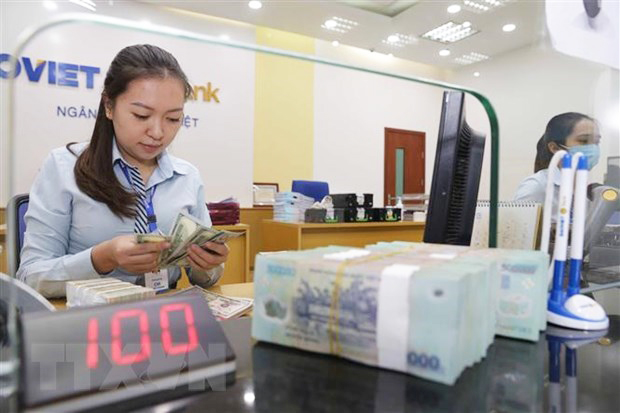 Economy
Economy

The State Bank of Vietnam (SBV) will keep a proactive and flexible monetary policy based on market developments and forecasts for the macro-economy, SBV Deputy Governor Đào Minh Tú told a meeting on Thursday.

|
| A bank clerk counts bills at a BAOVIET Bank's branch. — VNA Photo |
HÀ NỘI — The State Bank of Vietnam (SBV) will keep a proactive and flexible monetary policy based on market developments and forecasts for the macro-economy, SBV Deputy Governor Đào Minh Tú told a meeting on Thursday.
This monetary policy is meant to control this year’s inflation within the targeted ceiling of about 4 per cent, support macroeconomic stabilisation, assist economic recovery, ensure liquidity, maintain stability in the monetary and forex markets, and create conditions to reduce capital expenses for people, businesses, and the economy as a whole, the official said.
The SBV will maintain a close watch on domestic and foreign macro-economic and monetary changes, foreign exchange rate developments, as well as foreign currency demand and supply to set appropriate exchange rates, he noted, adding that it will carry out measures and policy tools to stabilise exchange rates and the forex market to help ensure macro-economic stability.
Credit provision will be boosted, especially for priority fields to match economic restructuring and help fuel growth and stabilise the macroeconomy.
Tu also stressed the need to tighten control over credit for high-risk areas like real estate, transport projects in build-operate-transfer (BOT) and build-transfer (BT) formats, and securities while at the same time adopting solutions to tackle difficulties facing those hit hardest by the COVID-19 pandemic and natural disasters.
The central bank will order credit institutions to facilitate people and enterprises’ access to credit to help minimise loan-sharking, he said.
Phạm Thanh Hà, Director of the SBV’s Monetary Policy Department, reported a credit growth rate of 3.34 per cent as of April 16, compared to the end of 2020, pointing out that the credit growth has begun stagnating as credit has increased by just 0.41 per cent in half a month though the rise was 0.76 per cent in January, eased slightly to 0.66 per cent in February due to the COVID-19 resurgence, and surged by 2.93 per cent in March.
The SBV said that since the beginning of the year, it has flexibly and synchronously used monetary policy tools to ensure liquidity for the banking system, stabilise the monetary market, and help reduce input cost for credit organisations, easing the pressure on deposit and lending interest rates. — VNS




